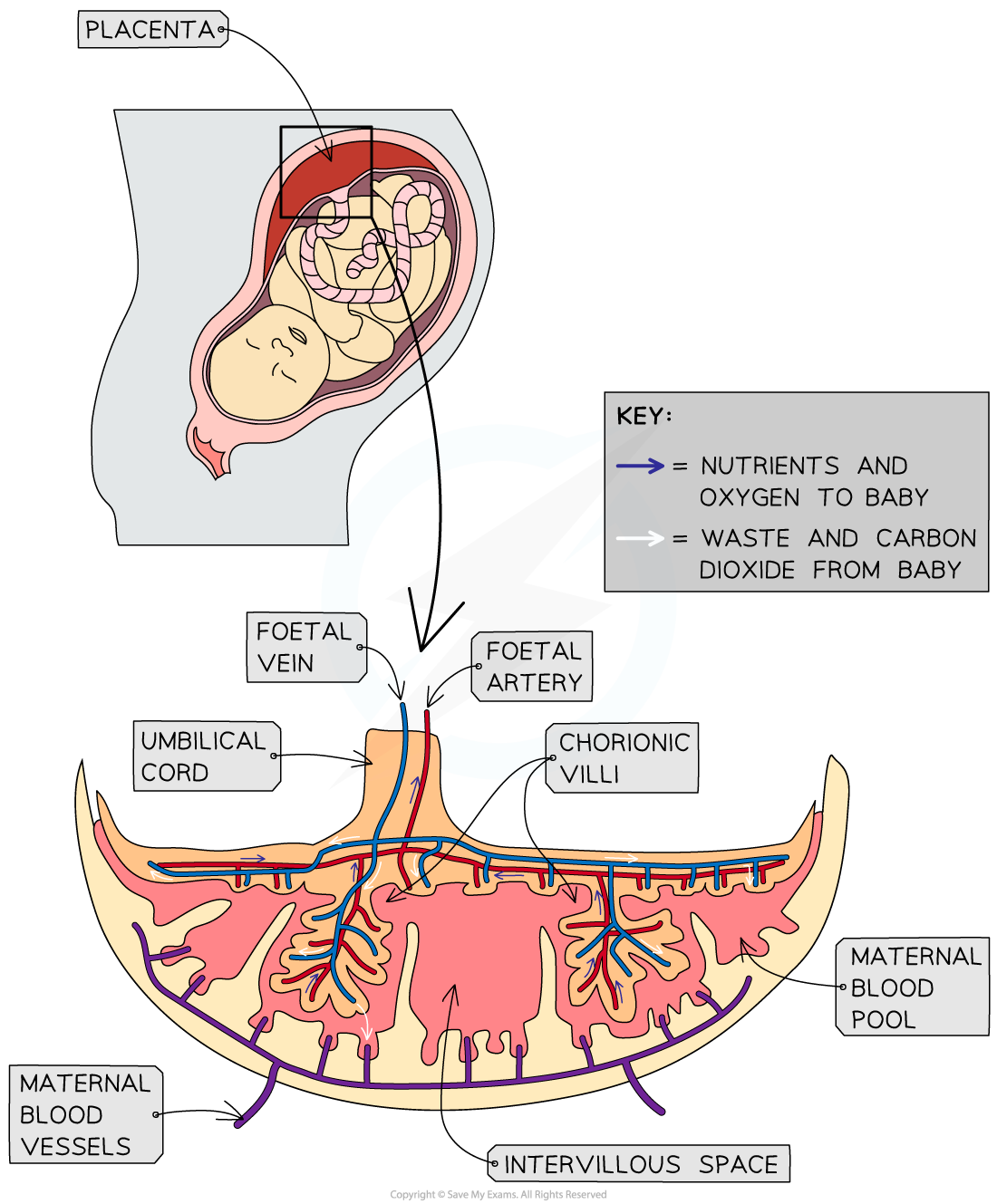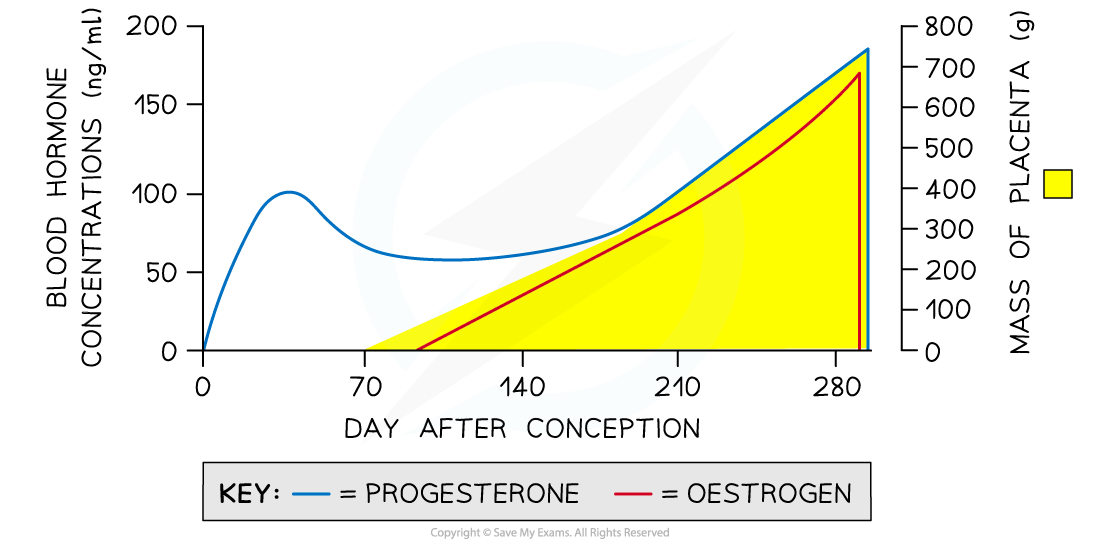The Placenta & the Exchange of Materials
- Mammals can be split into different categories on the basis of their mechanism for foetal nourishment
- Placental mammals, such as humans
- Monotremes, or egg laying mammals, such as a platypus
- Marsupials, such as kangaroos, whose offspring develop in a pouch
- Placental mammals rely on the complex system of blood vessels specially designed to maximise exchange of substances between mother and foetus without any direct connection between them
- The placenta is also responsible for production of key pregnancy hormones oestrogen and progesterone
- The foetus is connected to the placenta via the umbilical cord and is contained within the amniotic sac filled with amniotic fluid which protects the foetus
Structure of the placenta
- The placenta is an organ primarily made up of a complex arrangement of blood vessels arranged into placental, or chorionic, villi with maternal blood flow distributed around the villi
- Throughout the course of the pregnancy, the number of villi increases to meet the demands of the growing foetus
- Maternal blood and foetal blood never mix directly, but flow either side of a layer of cells that make up the placental barrier; there is a very short distance between the maternal and foetal blood to allow exchange of nutrients and gases
- The mother's blood flows out of the mother's blood vessels and forms pools in the spaces surrounding the placental villi; these spaces are known as the inter-villous spaces
- The placental membrane, or barrier, provides a selectively permeable barrier which restricts the exchange of substances between mother and baby
- Substances that move across the barrier from mother to foetus include
- Oxygen
- Antibodies
- Antibodies cross the placenta using a mechanism called endocytosis
- Water
- Glucose
- Unwanted or harmful substances may also cross the placental barrier, including alcohol, drugs or small pathogens such as viruses
- Bacterial pathogens are too large to cross the barrier
- Substances that move across the barrier from foetus to mother include
- Carbon dioxide
- Water
- Urea
- The placenta is connected to the growing foetus by the umbilical cord

The placenta brings the maternal and paternal blood systems close but without directly mixing
The Placenta & Hormones
- Hormones play a fundamental role in promoting foetal development and maintaining the pregnancy
- The levels of hormones change throughout the stages of pregnancy and development of pregnancy organs, such as the placenta
- Initially, the degenerating corpus luteum (a group of cells that form in the ovary following ovulation) releases hormones that support the initial stages of the pregnancy, up to about week 9
- The placenta then takes over in releasing steroid hormones, oestrogen and progesterone
- The role of oestrogen is to stimulate growth of the uterus and mammary glands (commonly called breasts in humans)
- The role of progesterone is to support the lining of the uterus to maintain the pregnancy
- If the placenta fails to initiate hormone production, a miscarriage may occur

Pregnancy hormones change throughout gestation and with placental growth
